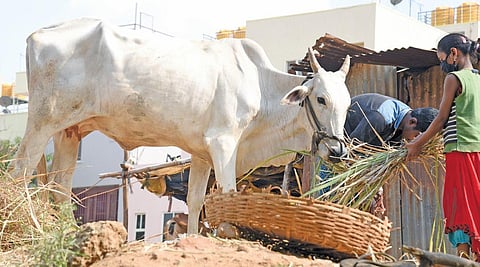

Some issues, groups and individuals become so embedded as Holy Cows that even a reasoned debate is impossible. Anyone who dares to dispute the notion that Mahatma Gandhi is the Father of the Nation gets bombarded with a volley of derogatory labels. Any criticism of the armed forces in India makes you travel beyond the pale. Firmly ensconced in this category is the notion that the Indian farmer is the annadata whose sweat and tears feed 1.4 billion Indians. So deeply held is this view that even the venerable Supreme Court virtually gave a free pass to farmers protesting the now-repealed farm laws who blockaded Delhi for about a year in 2021. In such a scenario, even a suggestion that Section 10(1) of the Income Tax Act, 1961 be abolished would sound like a double dose of heresy and blasphemy. Yet, 31 years after the Indian economy got the first whiff of ‘market-friendly’ winds, perhaps the time has come to re-examine this particular Holy Cow.
Shorn of jargon, Section 10(1) of the Income Tax Act, 1961 stipulates that no income tax will be imposed on agricultural income. In effect, all Indian farmers are automatically exempt from income tax. Despite claims of simplification, income tax rules are so obtuse that even chartered accountants sometimes struggle with the details. Three definitions of income from agriculture are hidden in all the jargon and details: any rent or revenue from agricultural land within India, any income derived from the processing of any agricultural produce in the said land, and any income attributable to a farmhouse subject to “conditions”. This has enabled about 12 crore farmers to escape the dreaded dragnet of income tax. This also explains the ‘mystery’ of merely 5.63 crore Indian citizens (out of 140 crores) filing income tax returns in 2021-22. This also explains why India reports a very low tax-to-GDP ratio among all major economies worldwide despite complaints of high tax incidence.
This needs to change and immediately. Farmers, like all citizens, must pay income tax. If armed forces personnel (the other twin in the Jai Jawan, Jai Kisan narrative) can sacrifice their lives defending the country and still pay income tax, why can’t the annadatas pay the same? Beyond such rhetorical questions, there are two reasons why it is high time income tax was imposed on farmers. The first is equity; the second is justice.
Let us look first at equity. There would be howls of protest about how an income tax will further impoverish and burden the Indian farmers who struggle against unfavourable terms of trade. Fair point. But the fact is that more than 90% of Indian farmers would automatically be out of any income tax bracket because of their incomes. According to official data, more than 86% of Indian farmers own less than two hectares of land. Together, they own just about 47.3% of the crop area. This massive cohort earns barely enough to make two ends meet and invariably supplements family income with other activities. More than ten crore Indian farmers will be out of the tax bracket. That leaves about 1.5 crore farmers who own more than two hectares of land. Even in this cohort, a majority will not pay income tax as even an inept chartered accountant knows that thanks to exemptions, Indians earning about Rs 8 lakh a year need not pay income tax. At best, about 50 lakh prosperous farmers in the country who drive SUVs and live in air-conditioned luxury will pay income tax. That sounds fair by any yardstick of equity.
More important is justice. Since agriculture income doesn’t attract income tax, virtually every rich Indian becomes a ‘farmer’. Note how income attributable to a ‘farmhouse’ is exempt from income tax provisions. A few decades ago, the media carried apocryphal stories of the responses of the then Bihar Chief Minister Rabri Devi to income tax sleuths. She appeared to have claimed that the Rs 4 to Rs 5 crore in “unexplained” income came from milk produced by buffaloes at her residence. It would be unfair to single out Rabri Devi for this mockery of justice. Tens of millions of rich Indians- politicians, entrepreneurs, film and sports stars, lawyers, doctors, architects, chartered accountants-have all become annadatas because of this “deliberately” placed loophole in the rules. There has never been a reliable or reasonably accurate study and estimate of how much income in India escapes the tax dragnet because of this annadata fixation. Given the size of India’s GDP (about $3.5 trillion in 2021-22), even a 5% rate of legal evasion means a loss of $175 billion.
Thanks to digitisation and a vastly improved information architecture, income tax collections have improved dramatically over the last decade. Income tax collections in 2011-12 were estimated at Rs 1.93 lakh crores. The figure is expected to be about Rs 8 Lakh crores in the current financial year. Yet, the tax-to-GDP ratio of about 11% is way below the average for OECD economies at 34% and even for major emerging markets like Brazil (31%) and South Africa (24%). There is little doubt that “farmhouses” have played a role in this.
That should provide food for thought even to farmers.
Sutanu Guru
Executive Director, C Voter Foundation
sutanuguru@gmail.com